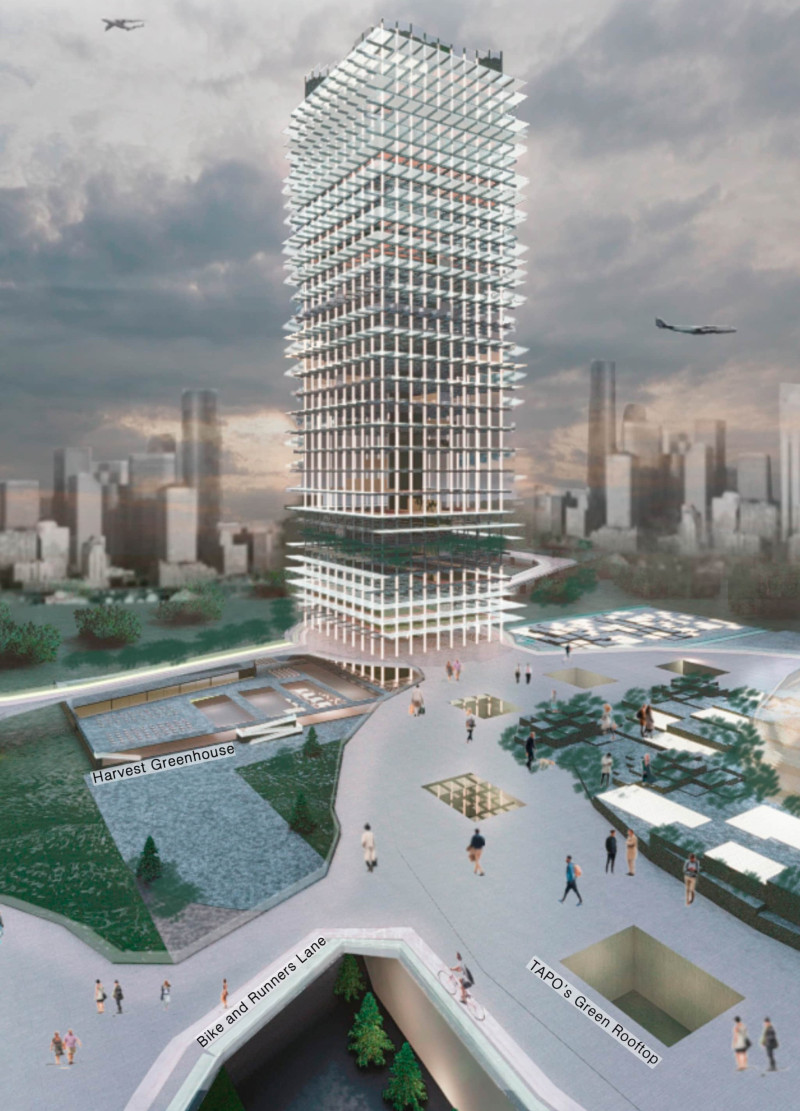5 key facts about this project
Designed as a multi-functional vertical habitat, SunRide SkyHive aims to address the growing demands of city living while promoting social interaction and ecological mindfulness. The architecture serves multiple functions, offering private residences alongside shared spaces that facilitate community gatherings and activities. This approach recognizes the need for connection in urban settings, encouraging a sense of belonging among residents.
The project's architectural form is characterized by cascading terraces, which enhance both the aesthetic quality and the functional aspects of the design. These terraces provide essential outdoor spaces for residents, offering not only visual appeal but also opportunities for interaction with nature and each other. Alongside the terraces, the use of expansive glass panels ensures ample natural light permeates the interiors, effectively bridging the divide between the built environment and the surrounding urban context. This seamless interaction with the outdoors embodies the underlying philosophy of the design: to create a living space that is both integrated with the city and distinct in its commitment to sustainability.
A focal point of the SunRide SkyHive project is its dedication to ecological principles through the use of innovative materials and building techniques. The incorporation of reinforced concrete and glue-laminated timber establishes a robust yet lightweight structure, reducing the overall carbon footprint while ensuring durability and stability. Sustainable wood selections for interior finishes contribute to the overall warmth of the living spaces while aligning with sustainable practices. Furthermore, the implementation of solar panels plays a crucial role in harnessing renewable energy, underscoring the building's commitment to energy efficiency and environmental responsibility.
The project's urban agricultural features, such as the strategically placed harvest greenhouses, reveal its profound focus on sustainability and community health. These greenhouses not only provide residents with access to fresh produce but also serve as educational platforms that promote sustainable practices within the urban environment. Additionally, communal gathering areas designed for events and workshops encourage social interaction, forging connections among residents and fostering a vibrant community spirit.
Unique design approaches employed in the SunRide SkyHive project prioritize the creation of spaces that cater to both individual needs and collective aspirations. By merging private dwelling units with expansive communal areas, the architecture facilitates a lifestyle where interaction and solitude coexist harmoniously. This balance is crucial in enhancing the quality of life for residents, encouraging engagement without compromising personal comfort.
Throughout the design, there is a clear commitment to addressing the challenges posed by urbanization. Elements such as waste management and recycling areas not only promote sustainability but also instill a sense of responsibility among residents towards their community and environment. This emphasis on sustainable practices is integral to the project, providing a model for future developments in densely populated urban locations.
Exploring the architectural plans, architectural sections, and architectural designs of SunRide SkyHive reveals further intricacies of the project, highlighting how each element is meticulously crafted to support the overall vision. The architectural ideas behind this project are not just about creating living spaces; they are about redefining how communities interact with their environment and with each other.
For those interested in further understanding the nuances of this architectural endeavor, reviewing the project presentation can provide deeper insights into its thoughtful design and innovative approaches. Investigate the intricate details that distinguish SunRide SkyHive as a model of contemporary urban living, where architecture serves as a catalyst for sustainability and community connectivity.























